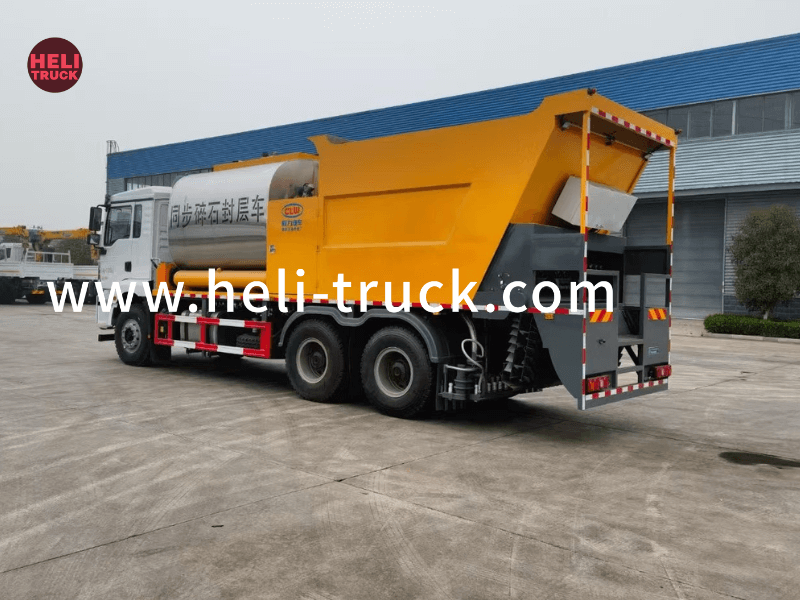Introduction
Work trucks play a crucial role in various industries, providing essential services and support for businesses and communities. These vehicles are often deployed in challenging environments and conditions, making them susceptible to emergencies and accidents. In such situations, a prompt and effective emergency response is vital to ensure the safety of the workers, protect the public, and minimize the impact on operations. This article explores the importance of work truck emergency response, the challenges faced in these situations, and strategies and best practices to enhance emergency preparedness and response capabilities.
Importance of Work Truck Emergency Response
Work trucks are commonly used in industries such as construction, utilities, transportation, and emergency services. These vehicles are equipped with specialized equipment and tools to perform a wide range of tasks, from hauling materials and equipment to providing maintenance and repair services. However, the nature of their work often exposes them to various risks, including accidents, mechanical failures, hazardous materials incidents, and natural disasters.
In the event of an emergency involving a work truck, a swift and well-coordinated response is essential to mitigate the impact of the incident. Effective emergency response can help prevent injuries, protect property, and ensure the continuity of operations. It also reinforces the organization's commitment to safety and preparedness, enhancing its reputation and credibility among stakeholders.

Challenges in Work Truck Emergency Response
Despite the importance of work truck emergency response, several challenges can impede the effectiveness of such efforts. Some of the key challenges include:
1. Remote Locations: Work trucks often operate in remote or isolated areas where access to emergency services and support may be limited. Responding to emergencies in these locations can be challenging due to the lack of infrastructure and resources.
2. Limited Communication: Work truck operators may face communication difficulties during emergencies, especially in areas with poor network coverage or radio signal. This can hamper coordination and information sharing among team members and emergency responders.
3. Hazardous Materials: Work trucks involved in transporting hazardous materials pose additional risks during emergencies. Spills, leaks, or fires involving hazardous materials require specialized knowledge and equipment to contain and mitigate the situation safely.
4. Time Sensitivity: In emergencies, time is of the essence, and delays in response can exacerbate the situation. Work truck operators must act swiftly and decisively to prevent further harm and damage.
Strategies for Enhancing Work Truck Emergency Response
To address the challenges associated with work truck emergency response, organizations can implement various strategies and best practices to enhance their preparedness and response capabilities. Some of the key strategies include:
1. Develop Comprehensive Emergency Response Plans: Organizations should develop detailed emergency response plans specific to work truck operations. These plans should outline roles and responsibilities, communication protocols, evacuation procedures, and coordination with external emergency services.
2. Conduct Regular Training and Drills: Training and drills are essential to ensure that work truck operators are prepared to respond effectively in emergencies. Training should cover topics such as first aid, fire safety, hazardous materials handling, and emergency communication.
3. Equip Work Trucks with Emergency Kits: Work trucks should be equipped with emergency kits containing essential supplies such as first aid supplies, fire extinguishers, reflective vests, flashlights, and basic tools. These kits can help operators address minor emergencies and provide immediate assistance to those in need.
4. Implement GPS Tracking and Communication Systems: GPS tracking systems can help monitor the location of work trucks in real-time, enabling quick deployment of assistance in case of emergencies. Communication systems such as two-way radios or satellite phones can facilitate communication between team members and emergency responders.
5. Establish Emergency Response Teams: Organizations can designate and train specific individuals or teams to serve as emergency response coordinators. These teams should be responsible for activating the emergency response plan, coordinating with external agencies, and providing support to affected individuals.
6. Collaborate with Local Emergency Services: Building partnerships with local emergency services, such as fire departments, police, and medical services, is critical for effective emergency response. Organizations should establish communication channels and protocols for collaborating with these agencies during emergencies.
7. Conduct Risk Assessments and Mitigation Measures: Regular risk assessments should be conducted to identify potential hazards and vulnerabilities in work truck operations. Mitigation measures, such as implementing safety protocols, upgrading equipment, and improving training programs, should be implemented to reduce the likelihood of emergencies.
8. Monitor and Evaluate Emergency Response Performance: Organizations should regularly review and evaluate their emergency response performance through exercises, drills, and post-incident debriefings. Lessons learned from these evaluations can help identify areas for improvement and enhance overall preparedness.
Conclusion
Work truck emergency response is a critical aspect of ensuring the safety and well-being of workers, protecting property, and maintaining operational continuity. By implementing strategies and best practices such as developing comprehensive emergency response plans, conducting regular training and drills, equipping work trucks with emergency kits, and collaborating with local emergency services, organizations can enhance their preparedness and response capabilities. https://www.heli-truck.com/refrigerated-truck-the-backbone-of-cold-chain-logistics/ requires a proactive approach, strong coordination, and continuous improvement to address the challenges and complexities of emergencies involving work trucks. By prioritizing safety, investing in training and resources, and fostering a culture of preparedness, organizations can minimize the impact of emergencies and safeguard their workers and assets.
